Kon Tiki Museum - Oslo - 2015
The Kon-Tiki Museum ia a little further down the road from The Viking Ship Museum.
Thor Heyerdahl (1914 – 2002) was a Norwegian adventurer and ethnographer with a background in zoology, botany, and geography.
He became notable for his Kon-Tiki expedition in 1947, in which he sailed 8,000 km across the Pacific Ocean
in a hand-built raft from South America to the Tuamotu Islands.
The expedition was designed to demonstrate that ancient people could have made long sea voyages, creating contacts between separate cultures.

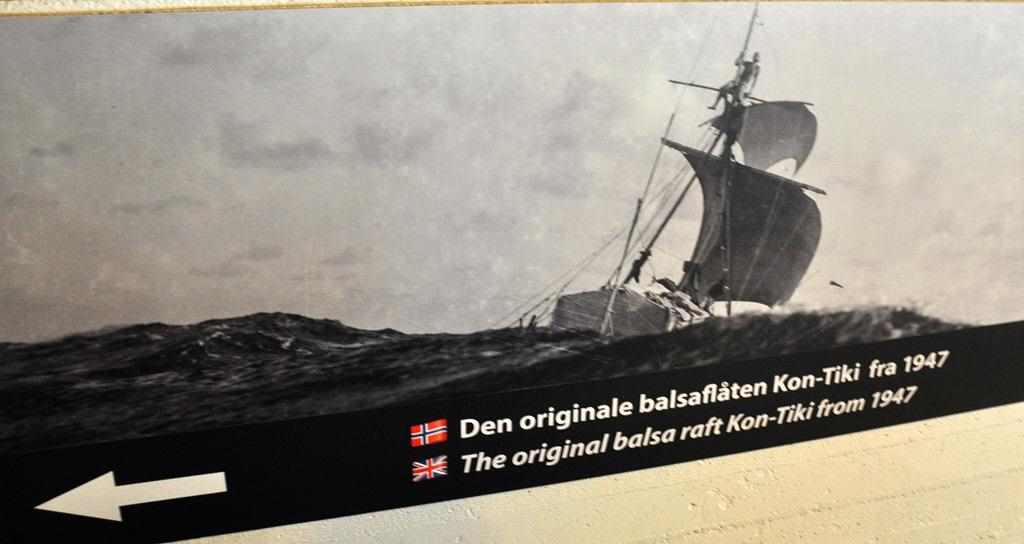
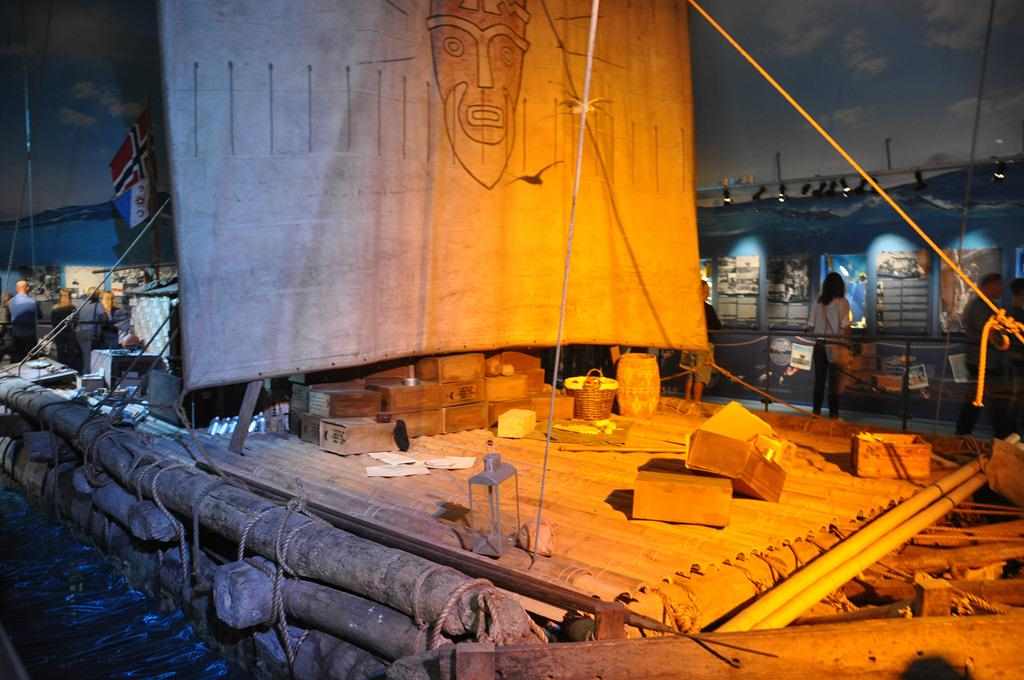
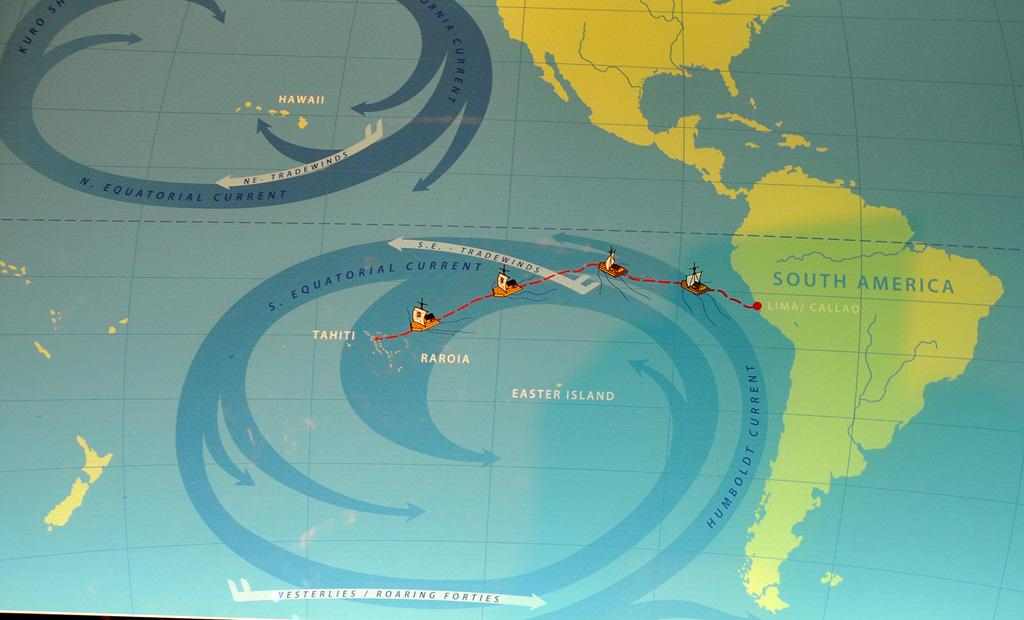
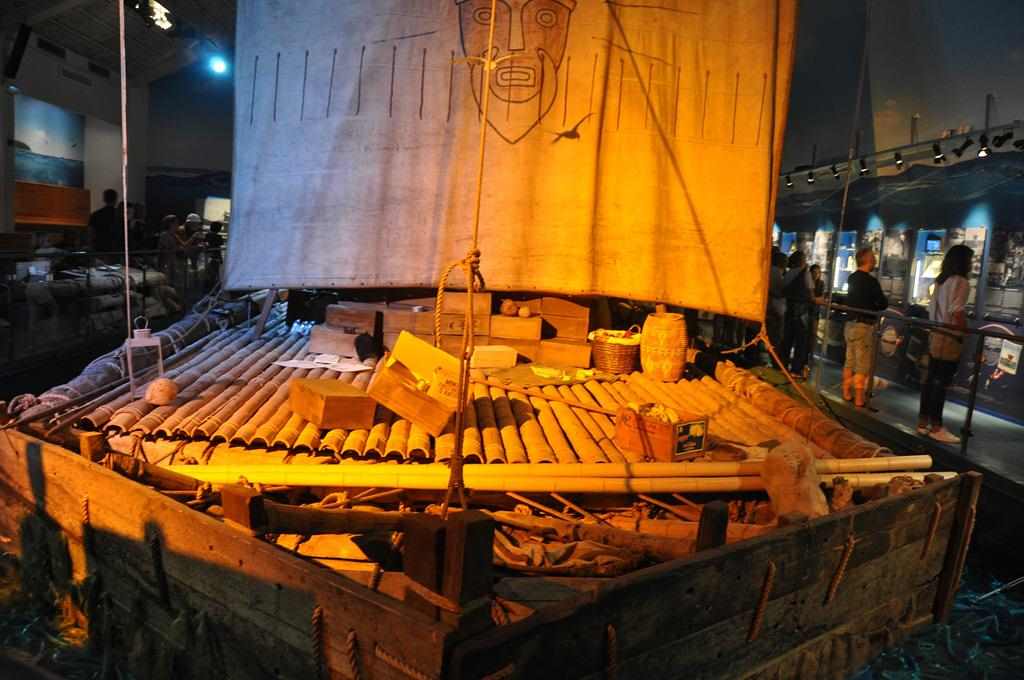

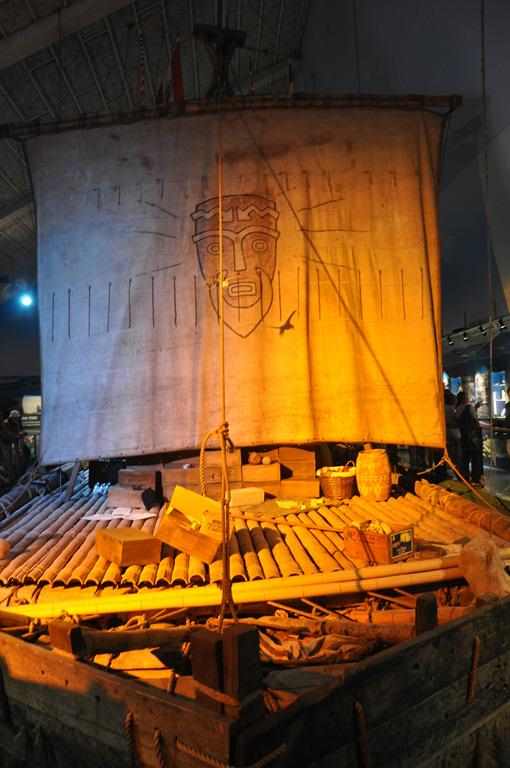
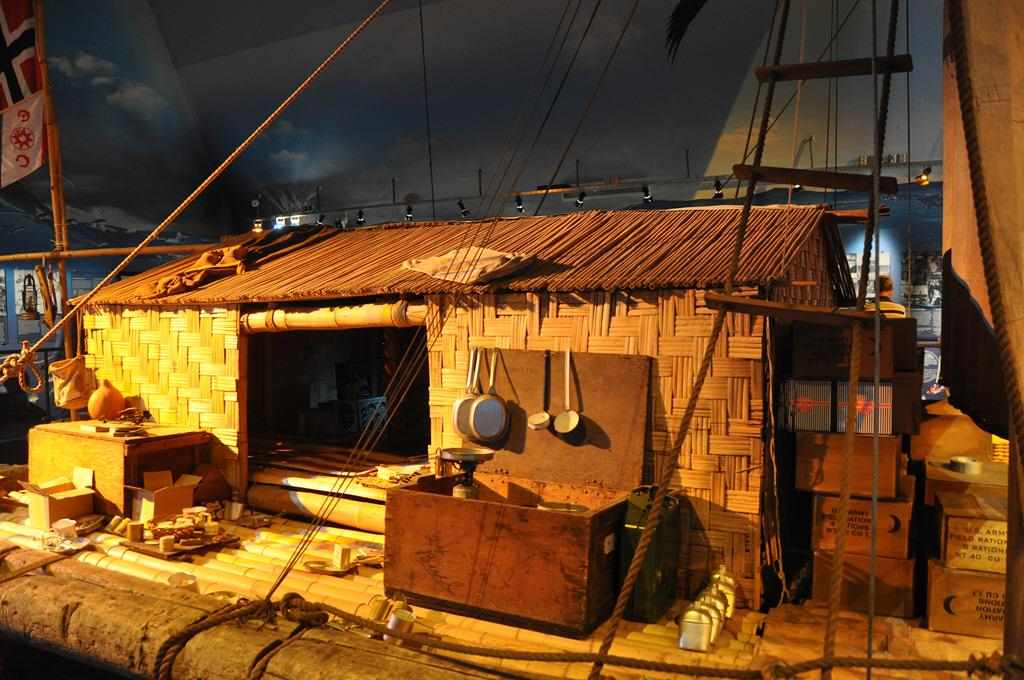

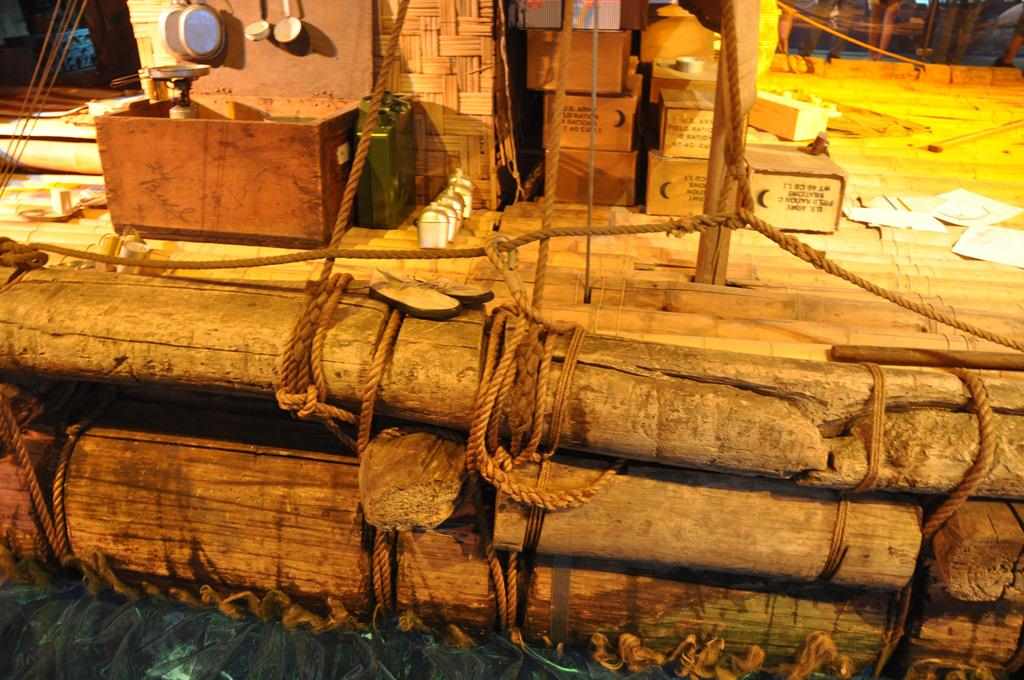

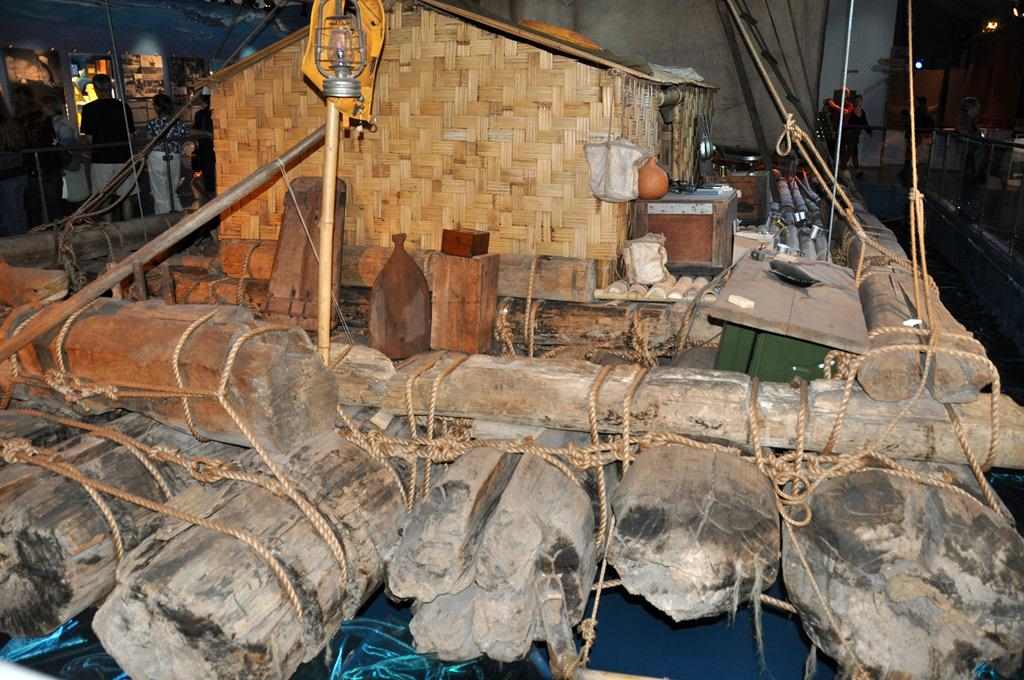
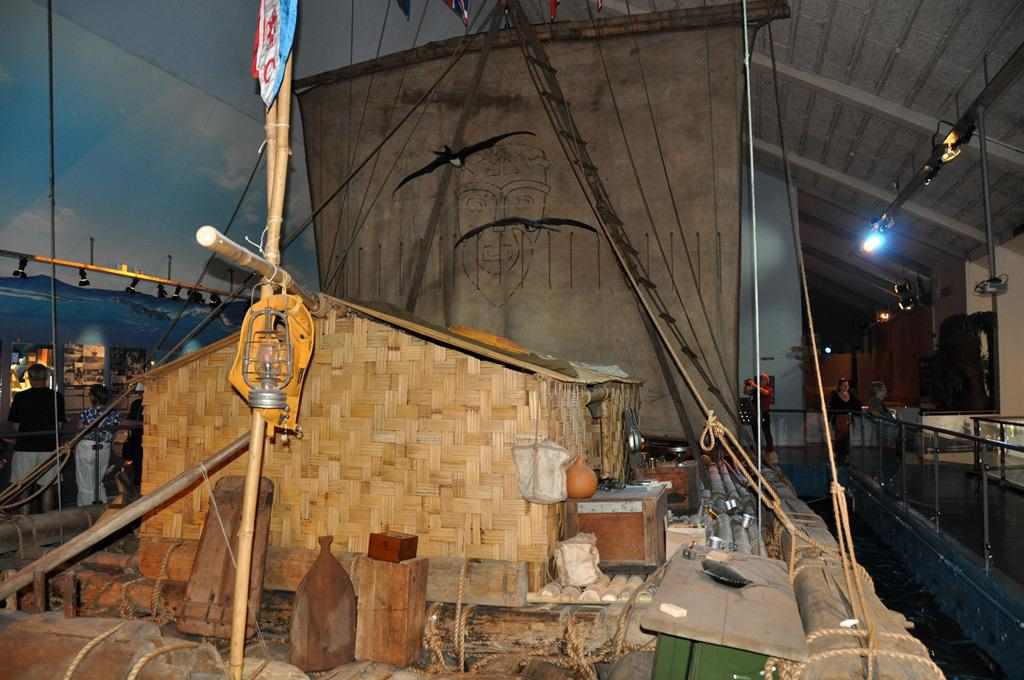
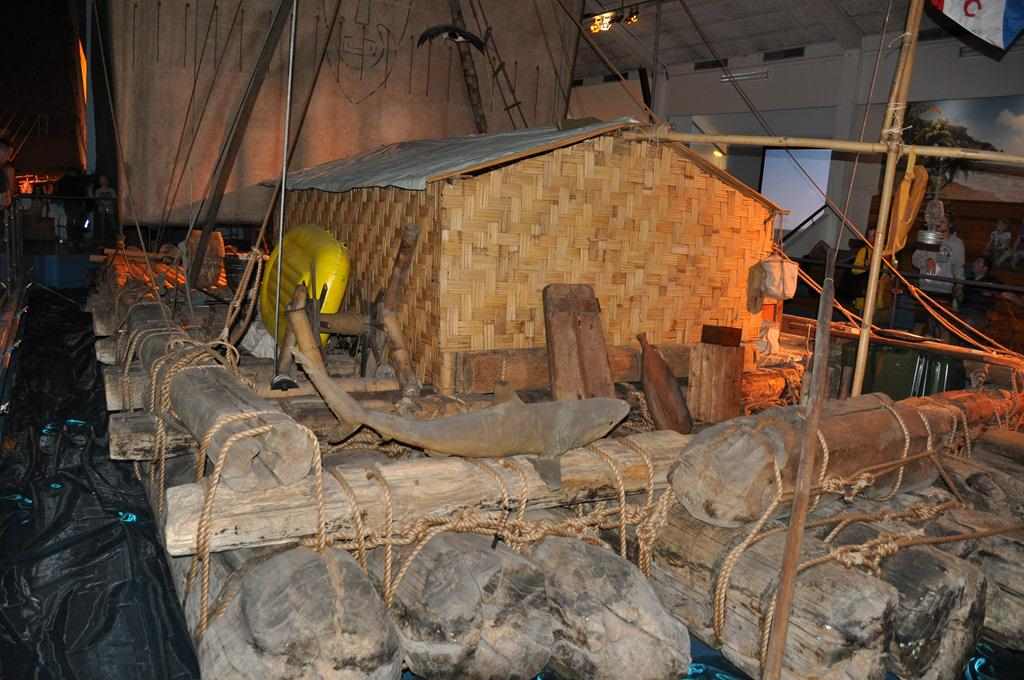
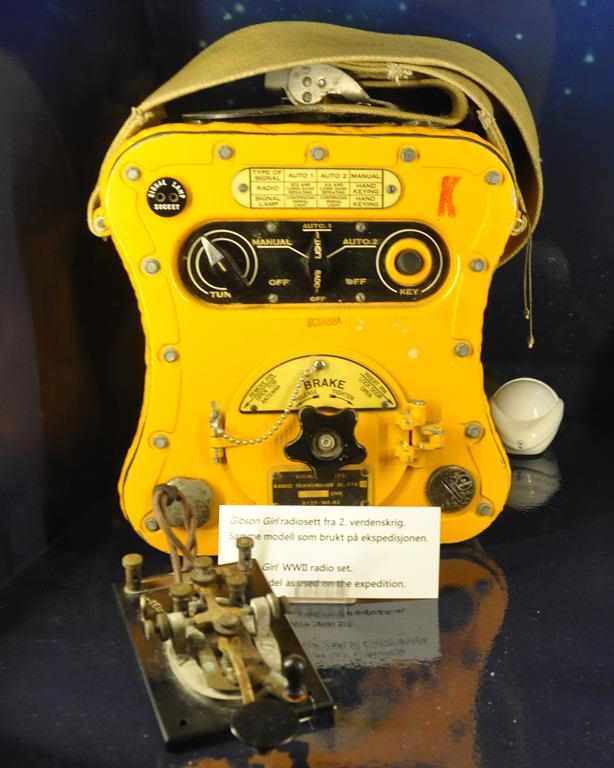




Ra 1
In 1969, Heyerdahl built a boats from papyrus and attempted to cross the Atlantic Ocean from Morocco in Africa.
Based on drawings and models from ancient Egypt, the boat, named Ra (after the Egyptian Sun god), was constructed by boat builders from
Lake Chad using papyrus reed obtained from Lake Tana in Ethiopia and launched into the Atlantic Ocean from the coast of Morocco.
After a number of weeks, Ra took on water after its crew made modifications to the vessel that caused it to sag and break apart after sailing
more than 6440 km (4000 miles). The crew were forced to abandon Ra some hundred miles before Caribbean islands and were saved by a yacht.
Ra 11
The following year, 1970, another similar vessel, Ra II, was built of papyrus by boat builders from Lake Titicaca in Bolivia
and likewise set sail across the Atlantic from Morocco, this time with great success.
The boat reached Barbados, thus demonstrating that mariners could have dealt with trans-Atlantic voyages by sailing with the Canary Current.

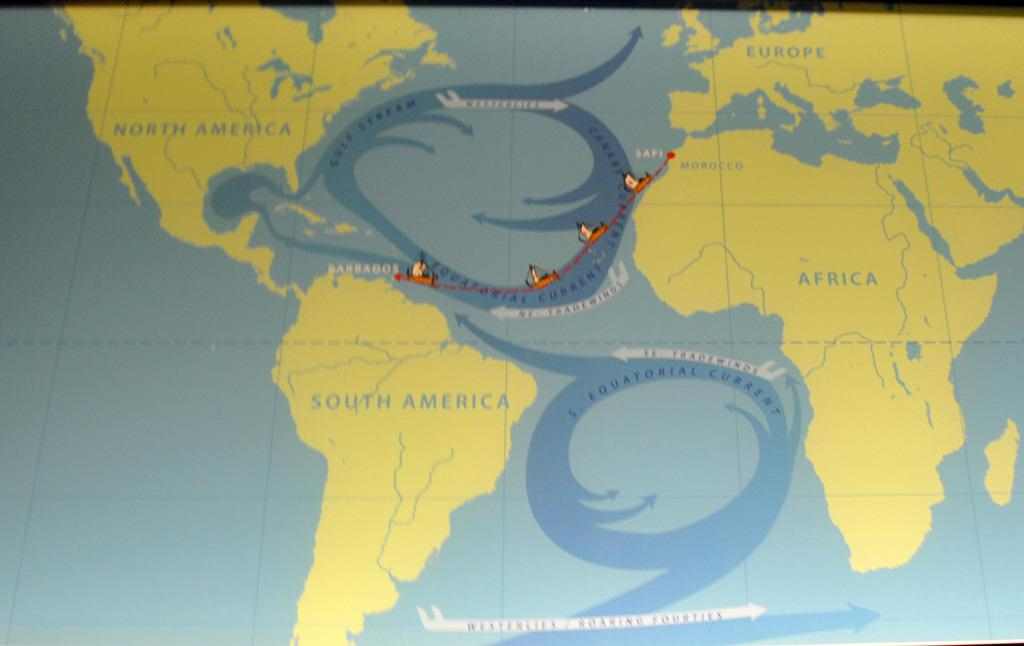
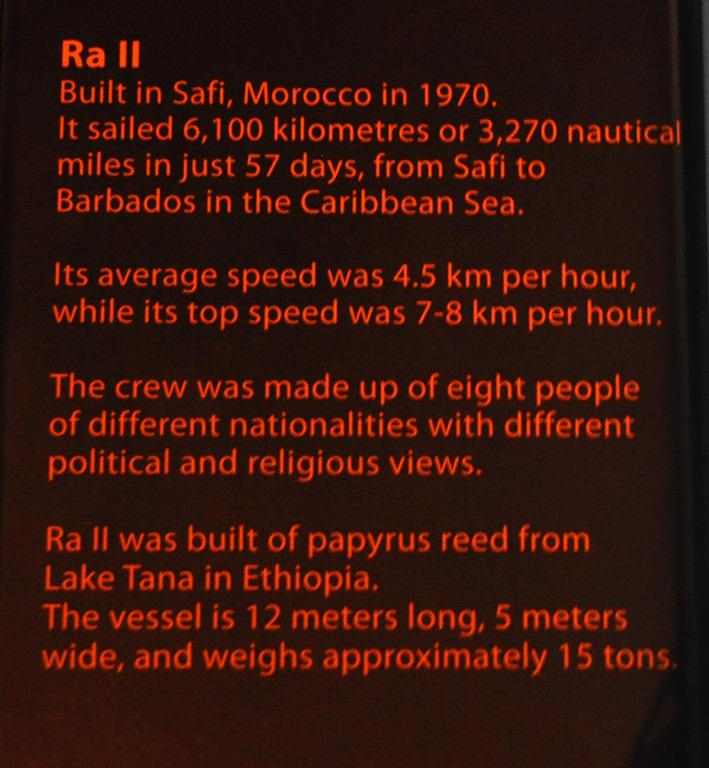
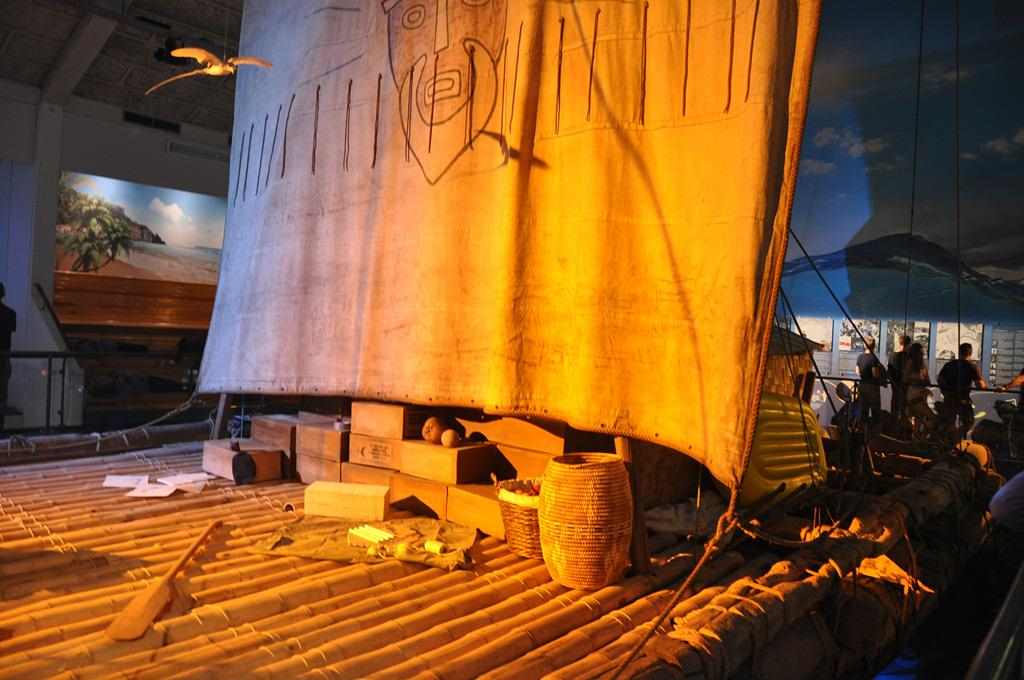

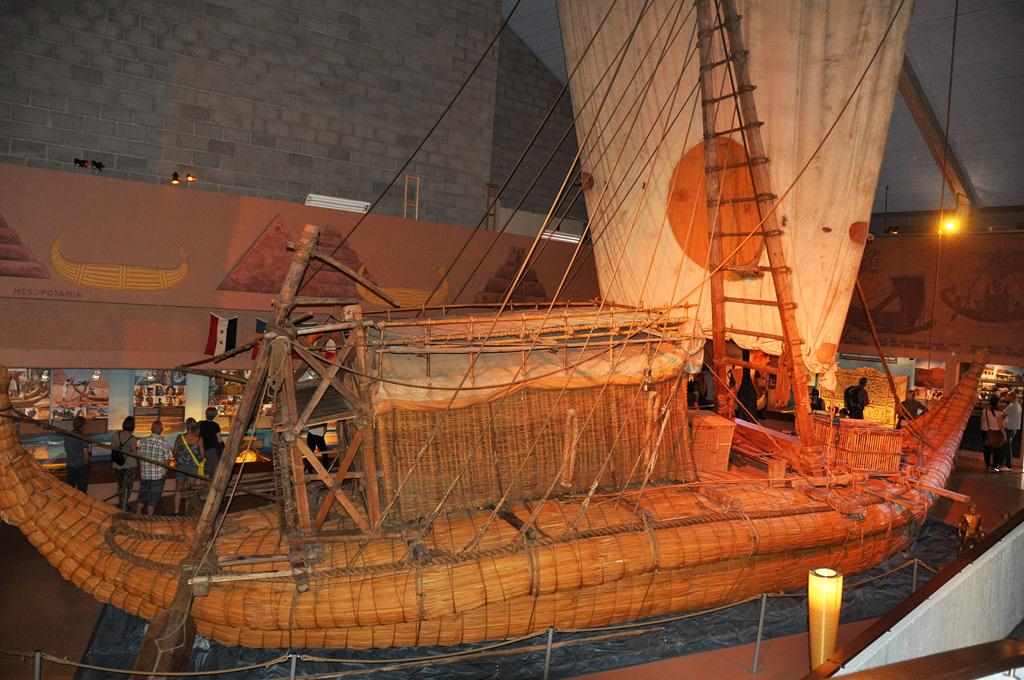

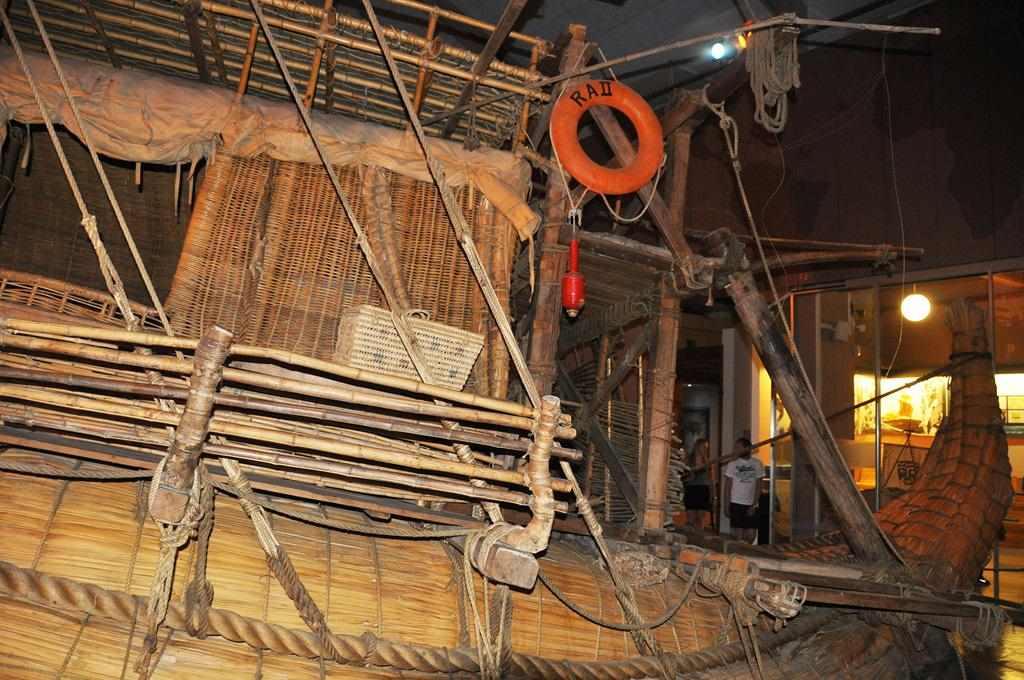

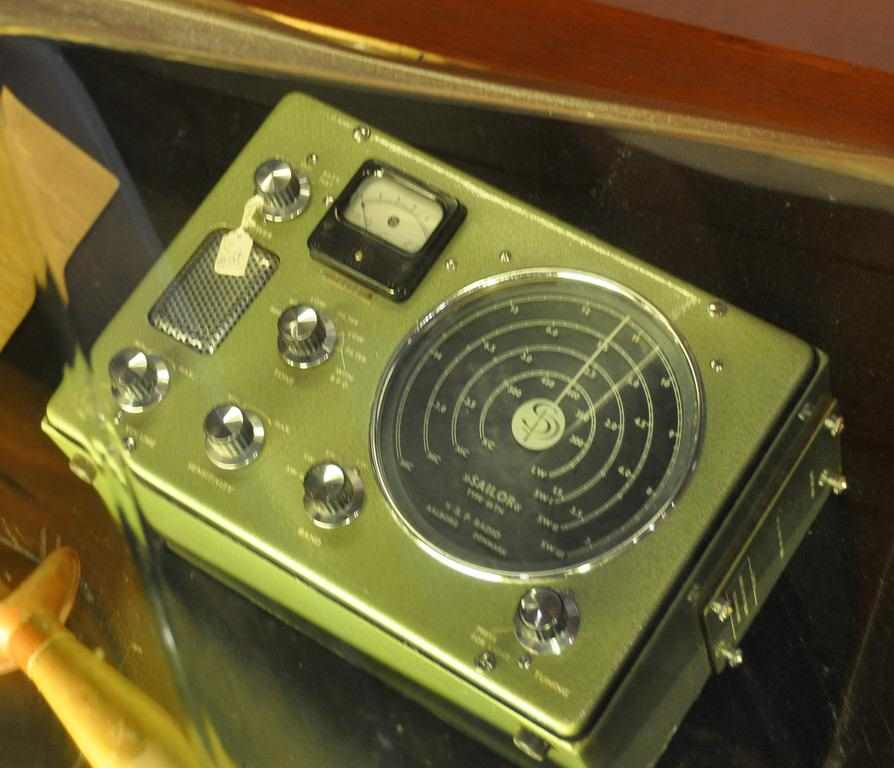



Tigris
Heyerdahl built yet another reed boat, Tigris, which was intended to demonstrate that trade and migration could have linked Mesopotamia
with the Indus Valley Civilization in what is now Pakistan and western India.
Tigris was built in Iraq and sailed with its international crew through the Persian Gulf to Pakistan and made its way into the Red Sea.
After about five months at sea and still remaining seaworthy, the Tigris was deliberately burnt in Djibouti, on April 3, 1978,
as a protest against the wars raging on every side in the Red Sea and Horn of Africa.
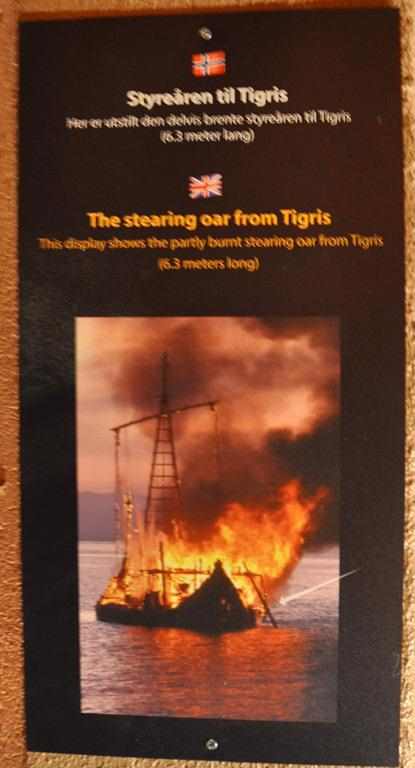

The Kon-Tiki Museum ia a little further down the road from The Viking Ship Museum.
Thor Heyerdahl (1914 – 2002) was a Norwegian adventurer and ethnographer with a background in zoology, botany, and geography.
He became notable for his Kon-Tiki expedition in 1947, in which he sailed 8,000 km across the Pacific Ocean
in a hand-built raft from South America to the Tuamotu Islands.
The expedition was designed to demonstrate that ancient people could have made long sea voyages, creating contacts between separate cultures.



















Ra 1
In 1969, Heyerdahl built a boats from papyrus and attempted to cross the Atlantic Ocean from Morocco in Africa.
Based on drawings and models from ancient Egypt, the boat, named Ra (after the Egyptian Sun god), was constructed by boat builders from
Lake Chad using papyrus reed obtained from Lake Tana in Ethiopia and launched into the Atlantic Ocean from the coast of Morocco.
After a number of weeks, Ra took on water after its crew made modifications to the vessel that caused it to sag and break apart after sailing
more than 6440 km (4000 miles). The crew were forced to abandon Ra some hundred miles before Caribbean islands and were saved by a yacht.
Ra 11
The following year, 1970, another similar vessel, Ra II, was built of papyrus by boat builders from Lake Titicaca in Bolivia
and likewise set sail across the Atlantic from Morocco, this time with great success.
The boat reached Barbados, thus demonstrating that mariners could have dealt with trans-Atlantic voyages by sailing with the Canary Current.













Tigris
Heyerdahl built yet another reed boat, Tigris, which was intended to demonstrate that trade and migration could have linked Mesopotamia
with the Indus Valley Civilization in what is now Pakistan and western India.
Tigris was built in Iraq and sailed with its international crew through the Persian Gulf to Pakistan and made its way into the Red Sea.
After about five months at sea and still remaining seaworthy, the Tigris was deliberately burnt in Djibouti, on April 3, 1978,
as a protest against the wars raging on every side in the Red Sea and Horn of Africa.

